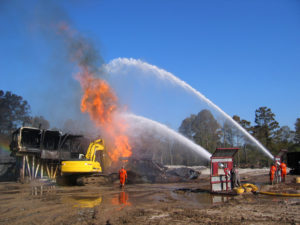 Most days for a well control company are pretty quiet. They’re helping an E&P plan safety procedures for a new pad or doing well safety training for another client. Generally they’re working to prevent or reduce danger on the well site.
Most days for a well control company are pretty quiet. They’re helping an E&P plan safety procedures for a new pad or doing well safety training for another client. Generally they’re working to prevent or reduce danger on the well site.
But, much like a community’s firefighters and EMTs, when that emergency call does come, the adrenaline flows and the action starts, because every second counts. Those well control people aren’t going to be coming from just a few blocks away—it may be several states or time zones in the process.
David Moody, Senior VP of Tech Support for WildWell, recalls that even during the depths of the travel restrictions of 2020’s COVID lockdowns, his company’s personnel received open doors to travel to where they needed to be.
Before sending anyone anywhere in those days, WildWell tested response personnel frequently for COVID to make sure they were healthy and ready to go when that alarm sounded. “We just wanted to make sure we had people that could respond,” he said. “At the end of the day we knew, if there was something going on somewhere, that they would cut through the red tape to get us there. It’s always been that way, no matter where we’re needed, globally or domestically.”
Overall, however, the dramatic days of Red Adair, Boots and Coots, etc., are gone. “People may think we’re a bunch of John Waynes and cowboys, but we’re not,” Moody announced. “More times than not, what has happened has happened, and we’re going to manage what happened.” The goal is to control risk and solve the issue at hand as quickly and safely as possible.
The no-John-Wayne image is actually cool with pretty much everyone in the well control industry. It means more people go home safely at shift’s end, and there’s less damage to equipment and the environment than in the old days.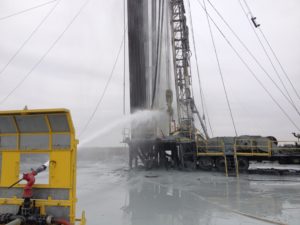
Moody explained that much of his company’s work happens in the planning stages of a drilling project, in order to mitigate risk before equipment or personnel set foot on the pad at all. “In the Permian Basin, as far as responding to well control events on the drilling side, we see very, very few [incidents]. If there is a problem during the drilling cycle of the well, it’s usually something mechanical.
“That’s because with the expertise and the communication among all the individuals out there, they know what they’re doing, and they have for years.” He added that as activity expanded from the Midland Basin to the Delaware, some of the early Delaware wells “experienced a few hiccups,” but research and updated training solved most of those issues. He added that most domestic drilling operations are very safe, but that the Permian is at the top of the list for safe operations.
The frac process can be more challenging to control than drilling because, “there’s a lot going on there, and that’s where we would get most of our calls.” He listed high pressure injection rates at the wellhead as leading to issues, but even there it’s mostly mechanical failures that create issues. The increasing speed at which wells are drilled and frac’ed has created some new safety challenges as well.
One of the issues with pad fracs is its nonstop nature, Moody said, especially before the downturn.
“Service companies were getting run ragged, going from one location to another.” While this means a lot of business for the frac companies, safety issues arise from personnel fatigue.
“The people who are doing these frac jobs, they’re not getting any relief—they’re working a lot of hours, on the road a lot.” Moody added that the frantic nature of the work left little time for equipment maintenance, “and that’s what we’re seeing issues with.”
With the advent of the downturn, drilling activity slowed to a crawl, but even that allowed less relief than might be expected, because frac companies laid off large contingents of staff. This left the remaining crews just as overworked as ever. Safety and training were also reduced, creating further issues.
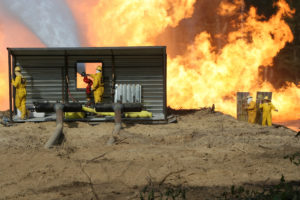
“Not that anybody is purposely doing these things,” but downturns create difficult decisions.
Moody stressed the need for each producer to have an emergency response plan in place, so that potential hazards can be dealt with quickly. The purpose of the plan is to prevent the need for an emergency call. He added that Wild Well, in the mid-1990s, was the first well control company to add an engineering component that had the goal of helping producers mitigate risks in the planning stage.
The first order of business in the plan would be to call Wild Well at the earliest sign of an issue. Moody pointed out that it can take several hours for a crew to drive to a remote location, but in the meantime they can be on the phone with the E&P’s onsite crew giving directions and keeping things under control, if possible, during the travel time.
Instructions could include include helping any local firemen understand that they should not shoot foam on a dynamic fire. Wild Well’s only use for water is to cool associated equipment—and the workers—to keep the fire from spreading and to allow people to work on the equipment to manage or divert the flow.
Revamping During the Downturn
Cudd Well Control Vice President Dustin Locklear also observed that blowouts were down due to reduced drilling activity. Other services have fared better, however. “What we’ve been doing well on is the special service work: the hot tapping, the valve drilling, the freezes, lots of preventative measures like training, writing emergency response plans,” and more.
Immediately pre-COVID, in January of 2020, the company decided to reimagine and expand its well control service. They brought in Andy Ferguson as general manager of Cudd Well Control and Sam Bowden as vice president of Corporate Services for Cudd Well Control, along with Locklear, all of whom had long years of experience in the industry. They also hired about 15 of the best people from other companies, adding up to 800 years of total experience.
Next, they redesigned and remanufactured equipment they supply, and added new pieces to their offerings. A new, suitcase-sized hot tap unit is at the top of that list.
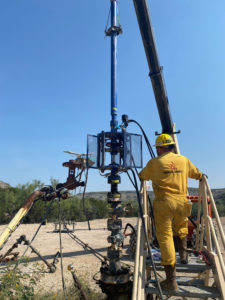 Behind the hot tap development was the realization that crowded pad-drilling sites required more compact tools, said Bowden. “It’s a very compact well base. You have wells that are very close together,” requiring smaller tools in order to access the well. The tool is “high pressure rated, but the real reason was some of these small cellars” at sites. Small size also allows it to be checked as luggage at an airport when a technician heads to a distant site. Some older units were so large they required an onsite crane for installation.
Behind the hot tap development was the realization that crowded pad-drilling sites required more compact tools, said Bowden. “It’s a very compact well base. You have wells that are very close together,” requiring smaller tools in order to access the well. The tool is “high pressure rated, but the real reason was some of these small cellars” at sites. Small size also allows it to be checked as luggage at an airport when a technician heads to a distant site. Some older units were so large they required an onsite crane for installation.
Generally a hot tap unit is called for when pressure must be released but a valve needed for that release is stuck shut. In that case the hot tap can safely drill a hole in the side for the installation of a new valve. Locklear explained that this is especially useful in plugging wells that were abandoned decades ago, whose valves have rusted shut. Some of those wells have no valves at all, only casing. A hot tap helps there as well.
The reboot came about with the help of RPC Inc. Cudd Well Control is a division of Cudd Pressure Control, which is a subsidiary of RPC. Ferguson said his goal upon assuming the GM reins was to improve the company’s people component. He recalled, “I met with Sam and with Dustin and we decided if we’re going to be in this business, we’re going to be in it for the long haul, and we’re going to have the best people, the best equipment. RPC let us do that.”
As the COVID shutdown hit a few weeks after that decision, Ferguson said, “It was either the worst timing or the best timing to do that.”
In the current environment, the market is picking back up, and all upgrades are ready for the increasing workload. With $75 oil and $5 per MMbtu natural gas they would like to see more business, but the market is also flooded with uncertainties that are holding back the implementation of new drilling projects.
One service on the rise is the plugging of abandoned wells, especially by the majors, Ferguson noted.
Locklear added, “Along with the plugging and abandonment comes the special service work—the hot taps, the valve drills. There are a lot of leaky wells around the United States. A lot of the majors are going in and fixing them now.”
Alliances with environmental companies allow Cudd to call them to remediate spills that result from blowouts, once the situation is stabilized.
SmartPhone App Arises During Downturn’s Quiet
“Another thing we did when we were all on lockdown,” said Ferguson, “[was that] we developed a Cudd Well Control app, available to anybody that wants it.”
When a customer has a wellsite event, that customer opens the app on their phone or smart device. The first thing that comes up is a button to click, which calls a Cudd well control expert. The screen also contains calculators for well control, coiled tubing, flange sizes, and other references. The app is also useful for quick access to non-emergency advice from Cudd personnel.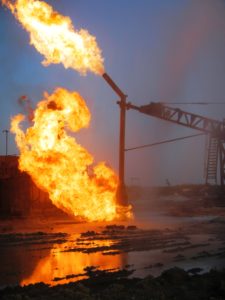
Well Control Insurance and Prevention
One new program is Cudd’s partnership with Worldwide Facilities, LLC, on an insurance program that covers up to $50,000 on services used in the first two days of a pressure control event. On the prevention side, it allows Cudd to offer rig surveys, training, and safety event drills.
In a separate program, Cudd now offers wellhead surveys wherein they test field equipment for wear and tear, rating sites on a scale from safe to dangerous. This can be done for drill, frac, or production sites.
With all the advantages brought by total site automation, Locklear noted that there is one disadvantage. Some problems, potential or current, can only be detected by human eyes or direct evaluation. Site surveys, somewhat like a season preventive maintenance visit for a home HVAC system, make a site even safer.
Pad Drilling’s Effect on Well Safety
A blowout on a single-well pad is dangerous enough, but the recent trend toward multi-well pads has exponentially increased the safety issues to be considered. In that light, Cudd has recently completed two studies examining the potential impact when one rig on a pad has an issue—such as falling over onto another well or wells—and how that could cause additional emergencies. They have also studied the effects of radiant heat, and how heat from a fire on one well could ignite others.
For example, Bowden recalled, “Year before last, we were on a four-well pad where one well caught on fire and it simultaneously caught the next, and the next, and the next well on fire.”
From the studies the company has advised producers on pad redesign to reduce risk and to better accommodate emergency efforts.
The 21st century well control company spends much more time and effort in prevention and planning than in dramatic catastrophe control, although they are fully ready to do that when needed. As John Wayne’s shadow disappears in the distance, it’s replaced with the shadows of thousands of workers heading home safely at the end of a shift.
Less dramatic, maybe, but much more satisfying to the community.
__________________________________________________________________________________________________
Paul Wiseman is a freelance writer in the oil and gas sector. His email address is fittoprint414@gmail.com.









